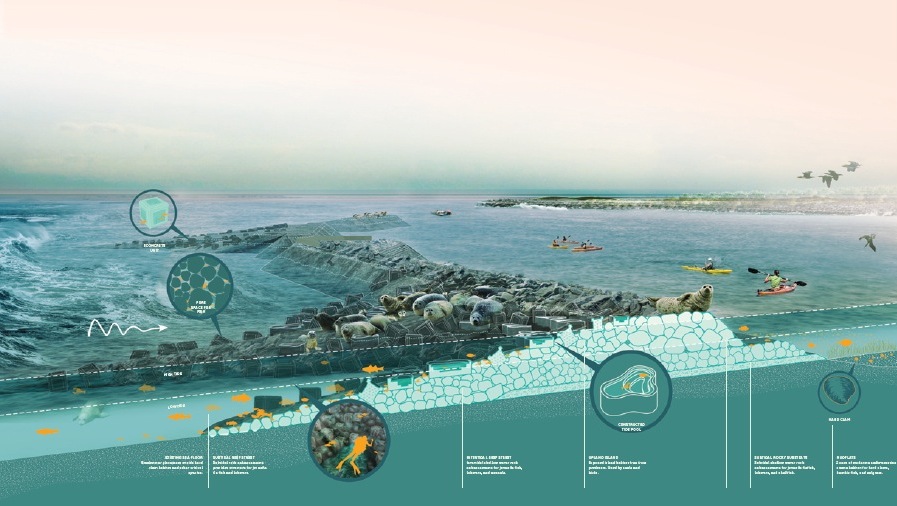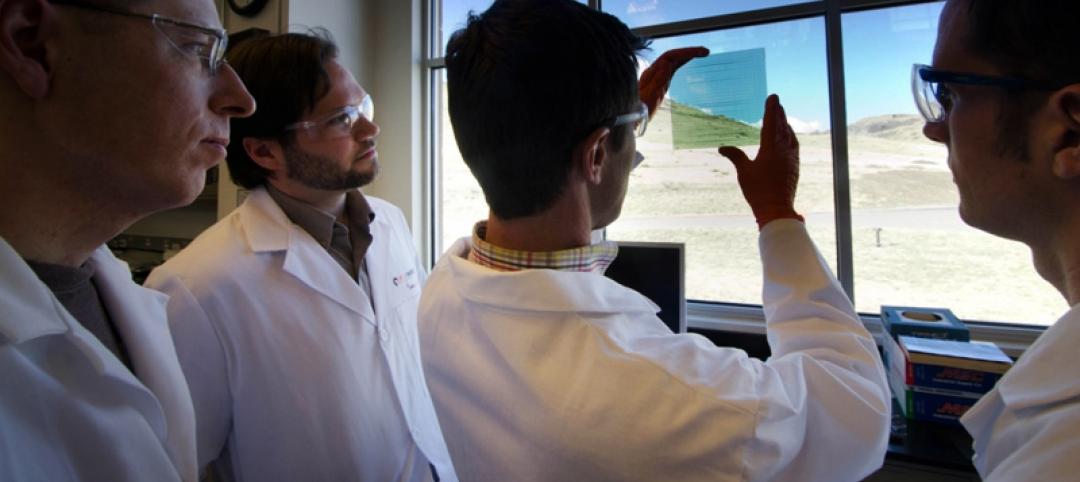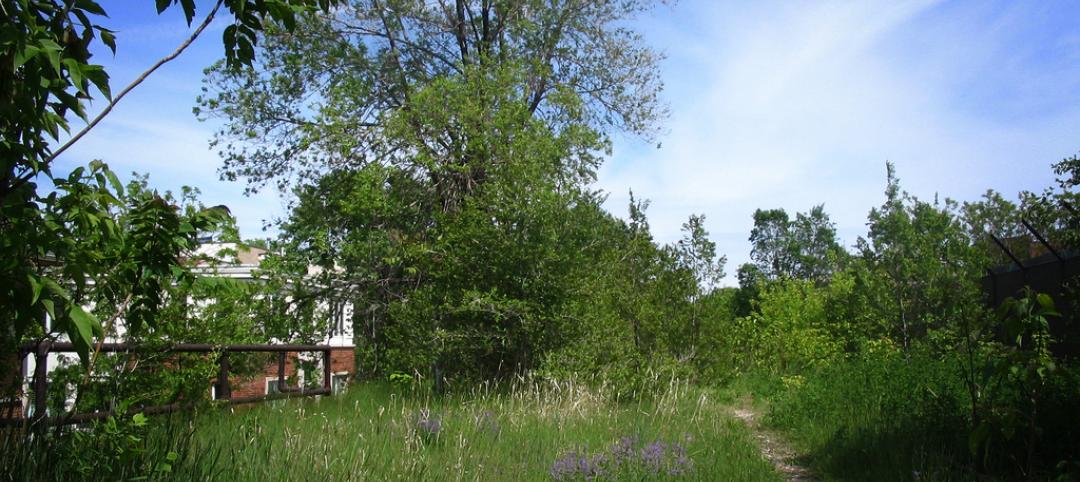New York-based landscape architecture firm SCAPE won the Buckminster Fuller Institute’s 2014 Fuller Challenge, billed as socially responsible design’s highest award.
The development project, Living Breakwaters, is a climate change adaptation plan. A 2014 Fuller Challenge senior advisor and jury member, Bill Browning of Terrapin Bright Green, said about the project: “Living Breakwaters is about dissipating and working with natural energy rather than fighting it. It is on the one hand an engineering and infrastructure-related intervention, but it also has a unique biological function as well. The project team [understands] that you cannot keep back coastal flooding in the context of climate change, but what you can do is ameliorate the force and impact of 100 and 500 year storm surges to diminish the damage through ecological interventions, while simultaneously catalyzing dialog to nurture future stewards of the built environment.”
According to SCAPE, Living Breakwaters “reduces risk, revives ecologies, and connects educators to the shoreline, inspiring a new generation of harbor stewards and a more resilient region over time.”
This is accomplished through a series of projects, including designing “reef street” micro-pockets of habitat complexity to host finfish, shellfish, and lobsters.
A release from the Buckminster Fuller Institute explains that the Living Breakwaters project "integrates components ranging from ecologically engineered ‘Oystertecture,’ to transformational education around coastal resiliency and the restoration of livelihoods traditional to the community of Tottenville in state Island,” while also encouraging systemic change in regulatory pathways at the state level.
Fuller Challenge's Program Manager Sarah Skenazy said, "This year’s Challenge winners deeply know that doing a physical intervention off the coastline would not be enough to create systemic change. Living Breakwaters is a project based in connections—the leadership team brings their deep expertise in technology and ecological science into the social dimension onshore in partnership with the community itself."
On winning the award, SCAPE’s Kate Orff said, "We are so honored to be the 2014 Fuller Challenge recipient. Fuller was optimistic about the future of humanity and deeply believed in cooperation as the way forward. As climate change impacts threaten shoreline populations, Living Breakwaters hopefully represents a paradigm shift in how we collectively address climate risks, by focusing on regenerating waterfront communities and social systems, and enhancing threatened ecosystems."
Orff will accept the Fuller Challenge prize and a $100,000 cash award on behalf of SCAPE at The Wythe in Brooklyn, N.Y., on November 20.
Learn more about the project at SCAPE.
Related Stories
BIM and Information Technology | Jun 14, 2015
Deep data: How greater intelligence can lead to better buildings
The buzzword may be “Big Data,” but the reality is that Building Teams need to burrow deep into those huge datasets in the course of designing and building new facilities. Much of the information is free. You just need to dig for it.
Smart Buildings | Jun 11, 2015
Google launches company to improve city living
The search engine giant is yet again diversifying its products. Google has co-created a startup, called Sidewalk Labs, that will focus on “developing innovative technologies to improve cities.”
Green | Jun 8, 2015
Maryland tech firm is developing spray-on solar panels for windows
Made primarily out of hydrogen and carbon, the coating can turn see-through surfaces into solar panels.
Green | Jun 8, 2015
Diamond Schmitt Architects creates tool to compare energy use data across building types
The firm's new ecoMetrics tool allows for a comprehensive analysis of data from energy simulation models across a wide range of the company’s building types.
High-rise Construction | Jun 5, 2015
Japanese policymakers discuss mandate for toilets in elevators
This quirky-sounding building code is a safety measure for the earthquake-prone nation.
Cultural Facilities | Jun 5, 2015
Chicago’s 606 elevated park opens
The 2.7-mile stretch repurposes an abandoned elevated train track that snakes through Humboldt Park and Bucktown.
Smart Buildings | Jun 4, 2015
Evidence suggests wider lanes make city streets more dangerous
Lanes that are 10.5 feet wide have lower side impact crashes than standard 12-foot lanes, suggests new research.
BIM and Information Technology | Jun 3, 2015
More accurate GPS ready to change the way we shop, interact, and explore
New technology reduces location errors from the size of a car to the size of a nickel—a 100 times increase in accuracy. This is a major technological breakthrough that will affect how we interact with environments, the places we shop, and entertainment venues.
Multifamily Housing | Jun 1, 2015
Sacramento moves forward on multifamily project with new modular supplier
Guerdon Modular Buildings will provide modules for 118 apartments.
| May 29, 2015
Austin, Salt Lake City, Davis, Calif., and Boston creating first protected intersections in U.S.
Protected intersections arrange traffic so that everyone—bicyclists included—can see all moving traffic simply by looking forward instead of forcing people in cars and on bikes to look constantly over their shoulders.
















